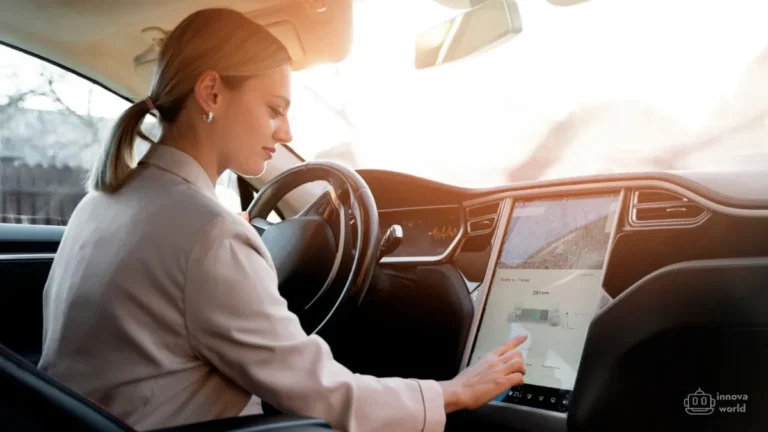Introduction: The Race Towards Autonomous Vehicles
The future of autonomous vehicles has always seemed like a science fiction dream, but thanks to the rapid advancements in 5G technology, we’re getting closer than ever to seeing self-driving cars on the roads. Imagine a world where your car drives you to your destination while you relax, work, or even sleep. With the immense power of 5G, the dream of Automated vehicles is becoming a reality faster than we expected. But how exactly can 5G enhance the efficiency and popularity of these futuristic machines? Let’s explore the groundbreaking impact of 5G on Independent driving.
Table of Contents
5G: The Game-Changer for Self-Driving Cars
The introduction of 5G technology is set to revolutionize many industries, and the automotive sector is no exception. Self-driving cars rely on a complex system of sensors, cameras, and AI to make decisions in real-time. However, the current 4G networks struggle to provide the speed and reliability needed for autonomous vehicles to function flawlessly, especially in busy or high-speed environments.
With 5G, everything changes. This next-generation mobile network offers speeds up to 100 times faster than 4G, ultra-low latency, and the ability to connect millions of devices simultaneously. For Independent vehicles, this means real-time communication between cars, infrastructure, and the cloud can be seamlessly achieved. The instant transfer of data allows self-driving cars to make split-second decisions, improving safety, efficiency, and the overall driving experience.
Real-Time Communication: A Key for Safe and Efficient Driving
One of the biggest hurdles for autonomous vehicles is ensuring they can communicate with other cars and traffic systems in real time. As the vehicles need to constantly be aware of their surroundings, timely updates on road conditions, traffic signals, and other vehicles are essential for smooth and safe driving.
5G’s ultra-low latency, often referred to as “instantaneous,” will make this possible. The speed of 5G ensures that an Fully automated car can receive and send information in mere milliseconds. For instance, if a vehicle ahead brakes suddenly or a pedestrian steps onto the road, the system can instantly react to avoid a collision. This level of quick decision-making, previously unattainable with 4G, is critical for the widespread adoption and safety of self-driving cars.
Moreover, 5G will enable vehicle-to-vehicle (V2V) and vehicle-to-infrastructure (V2I) communication, allowing autonomous cars to not only talk to each other but also with smart traffic signals, road signs, and even parking garages. Such advanced networking will create a smarter, safer driving ecosystem where cars can make smarter decisions, reducing congestion and minimizing accidents.
5G’s Impact on Popularizing Autonomous Vehicles
As 5G networks become more widespread and accessible, autonomous vehicles will move from high-tech prototypes to everyday transportation. Faster connectivity, lower costs, and increased reliability will make these self-driving cars more affordable and practical for the average consumer.

Currently, the complexity and price of Automated vehicles limit their reach. But with 5G paving the way, manufacturers can harness advanced technologies like edge computing and artificial intelligence to enhance vehicle performance while keeping costs in check. This means that the price of owning and operating an Independent car could become comparable to traditional vehicles in the not-too-distant future.
Furthermore, 5G will unlock the full potential of mobility-as-a-service (MaaS) platforms, where autonomous cars can operate as part of a larger, on-demand network. Instead of purchasing a car, consumers may choose to rent or subscribe to self-driving services that are constantly available at their fingertips. This shift could significantly reduce the number of privately owned vehicles, leading to less congestion, lower carbon footprints, and more accessible transportation options.
Conclusion: The Road Ahead for Autonomous Cars
In conclusion, 5G holds the key to transforming the autonomous car industry from a futuristic concept into a tangible, everyday reality. With its ability to support real-time communication, improve vehicle safety, and reduce operational costs, 5G technology is set to drive the widespread adoption of self-driving vehicles in the near future. The benefits are undeniable: fewer accidents, reduced traffic, and a smoother overall driving experience.
While we’re still in the early stages of this transformation, the combination of 5G and Independent vehicles promises to shape the future of transportation. As 5G networks expand and technology continues to evolve, we can look forward to a future where our cars do the driving for us, making travel more efficient, enjoyable, and safer than ever before.
In just a few years, the streets may be filled with Intelligent vehicles cars, all thanks to the incredible capabilities of 5G technology. The journey has just begun, but the destination is clearer than ever. Prepare yourself for the revolution that’s already on the horizon.








